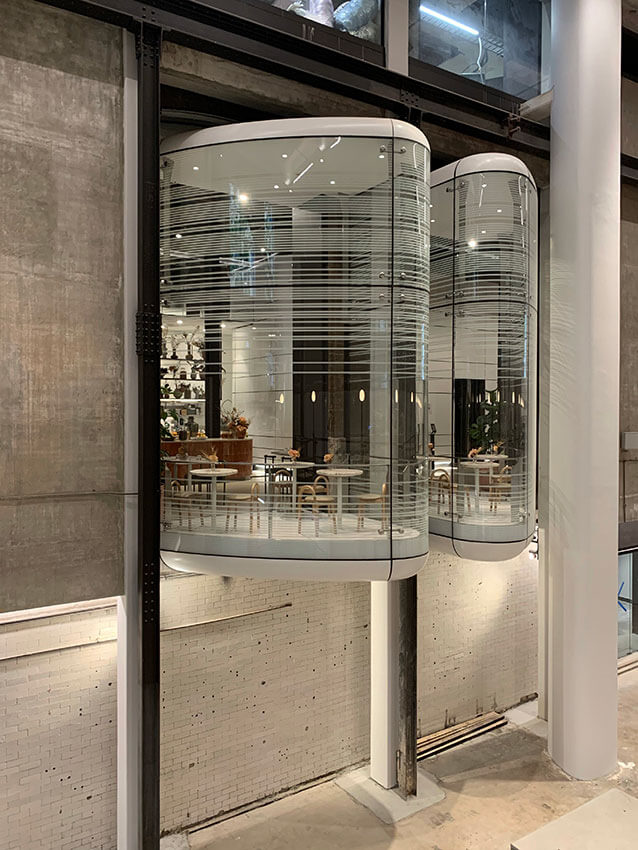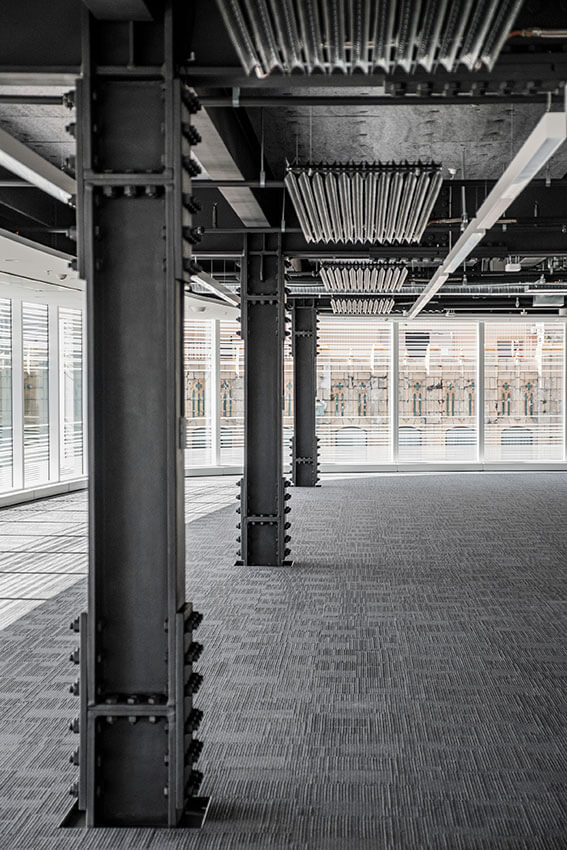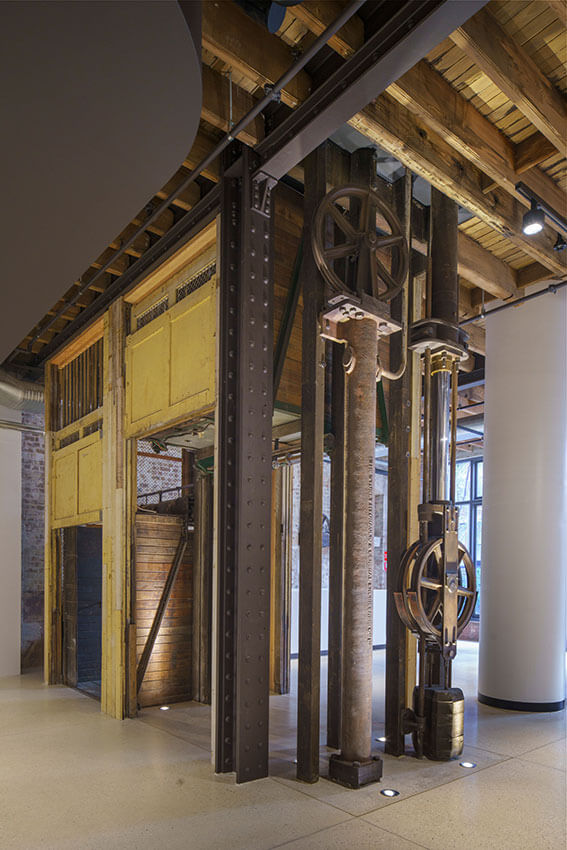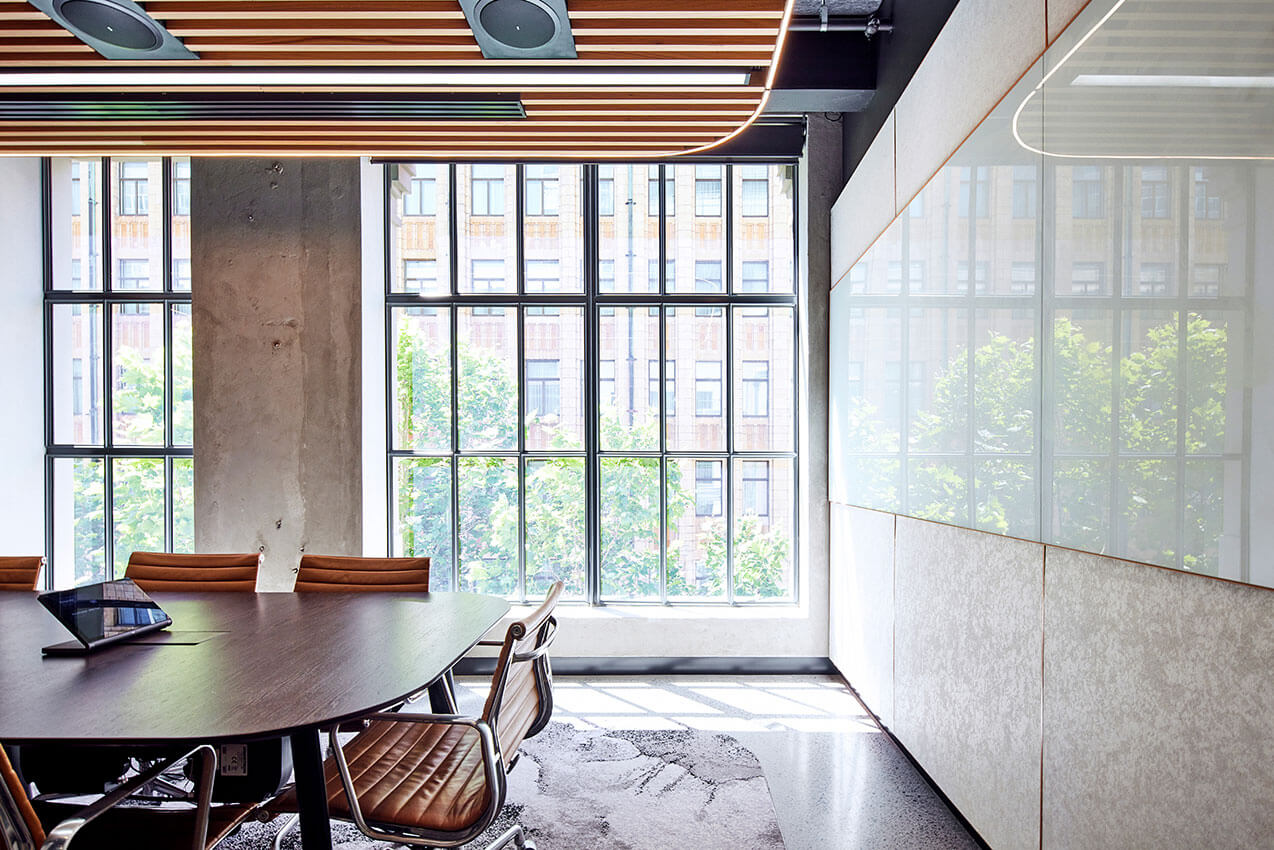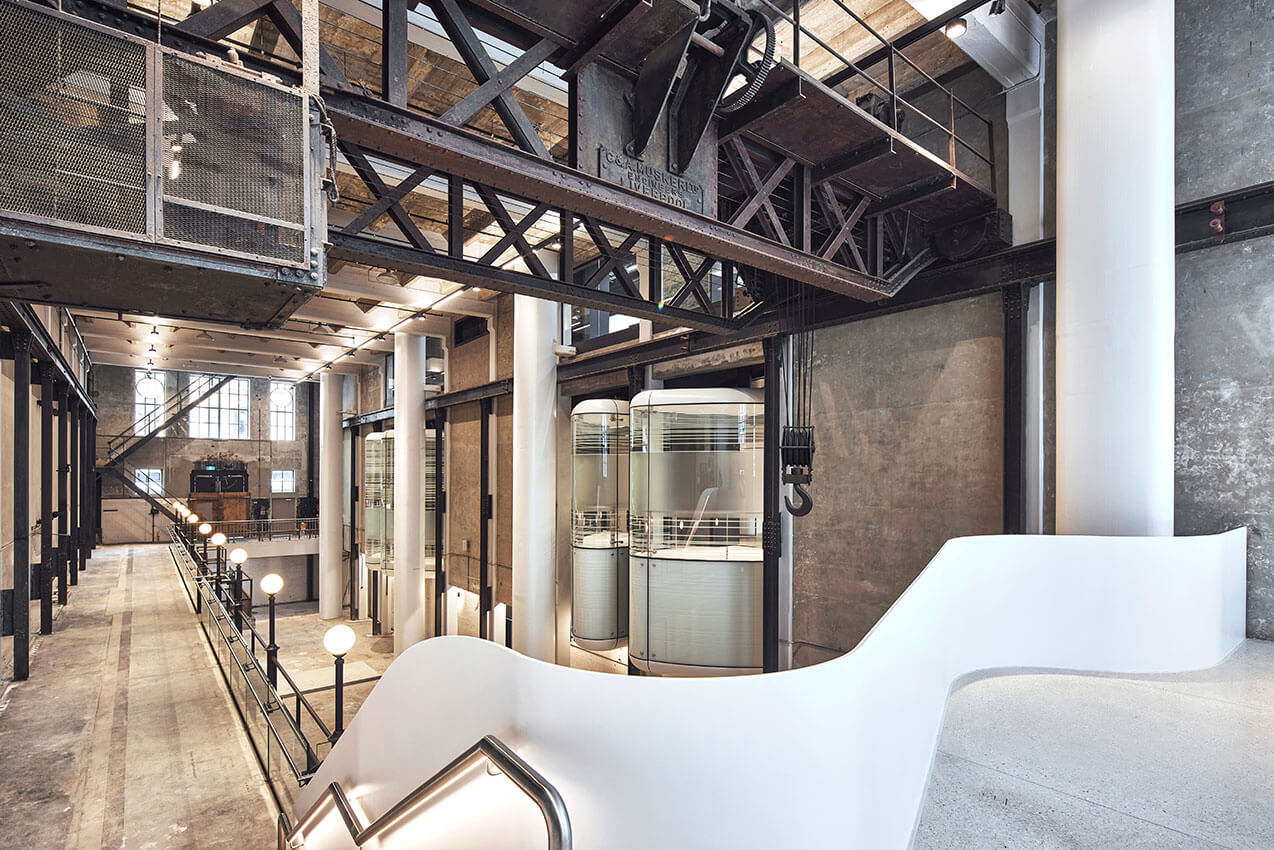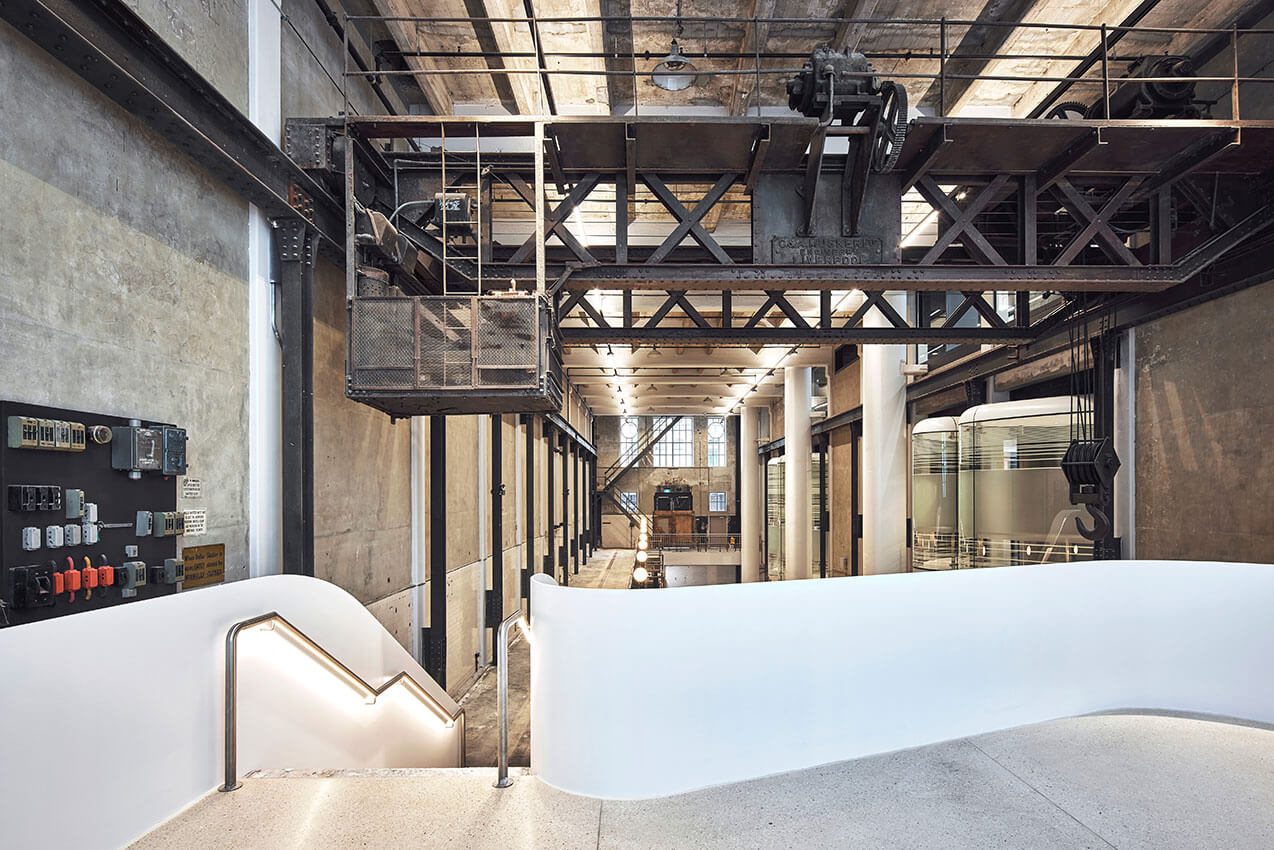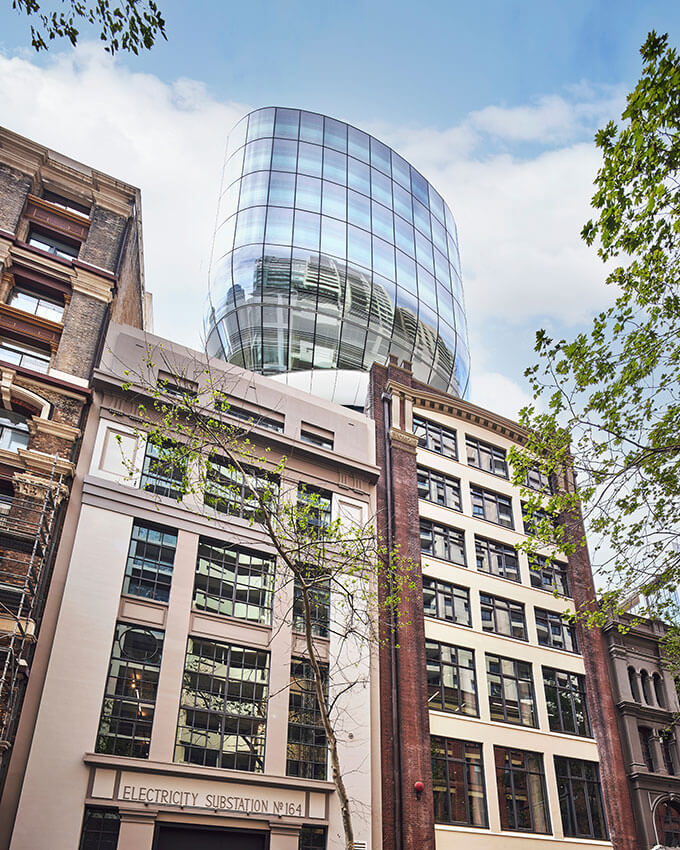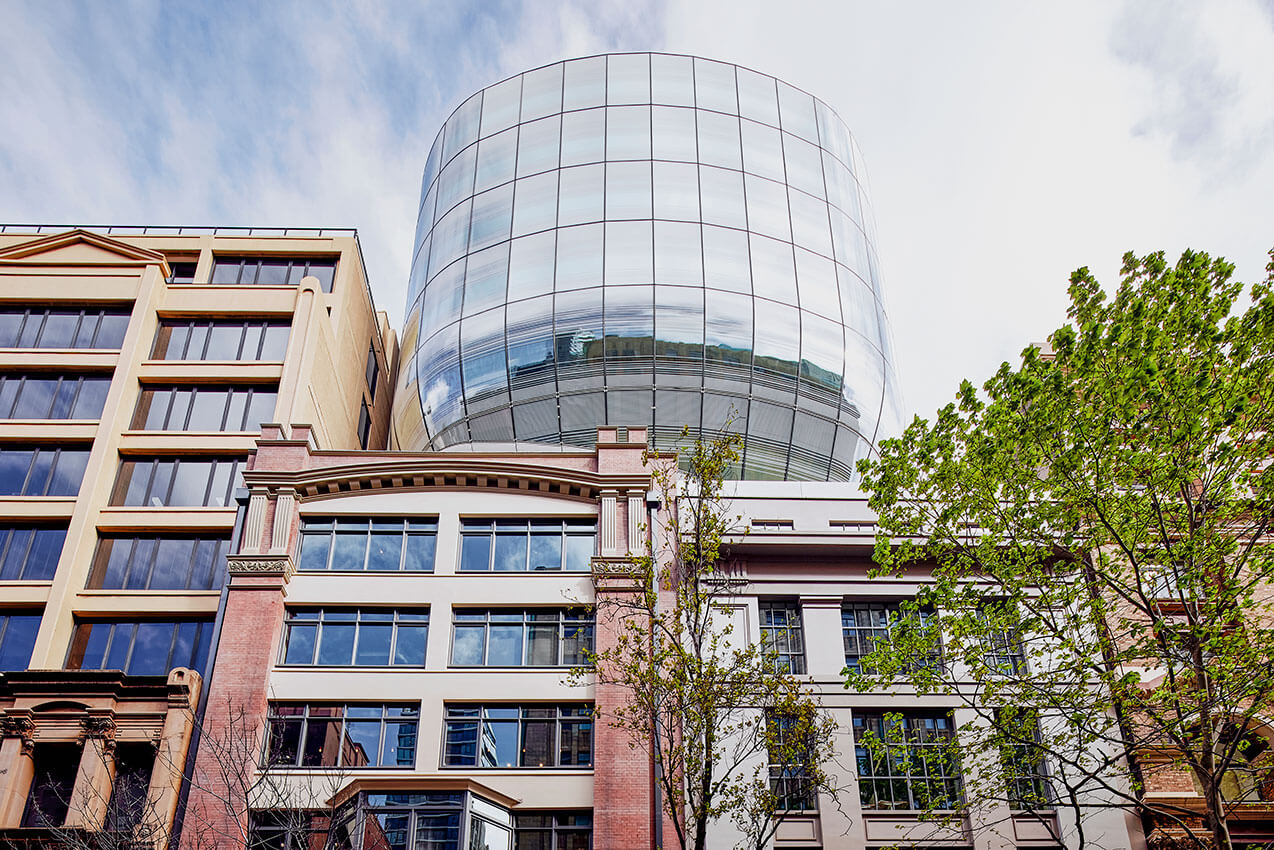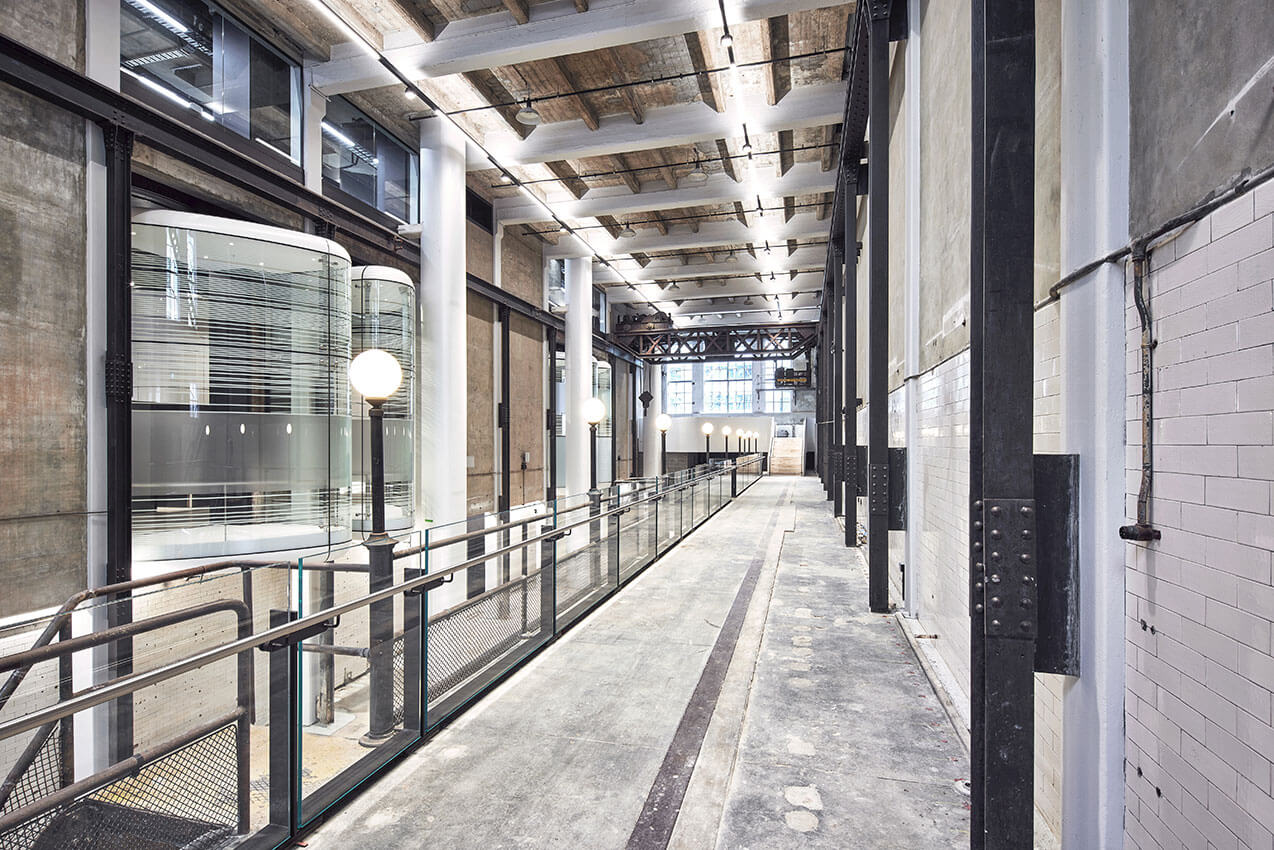Sub Station No. 164 | fjcstudio (formerly fjmtstudio)
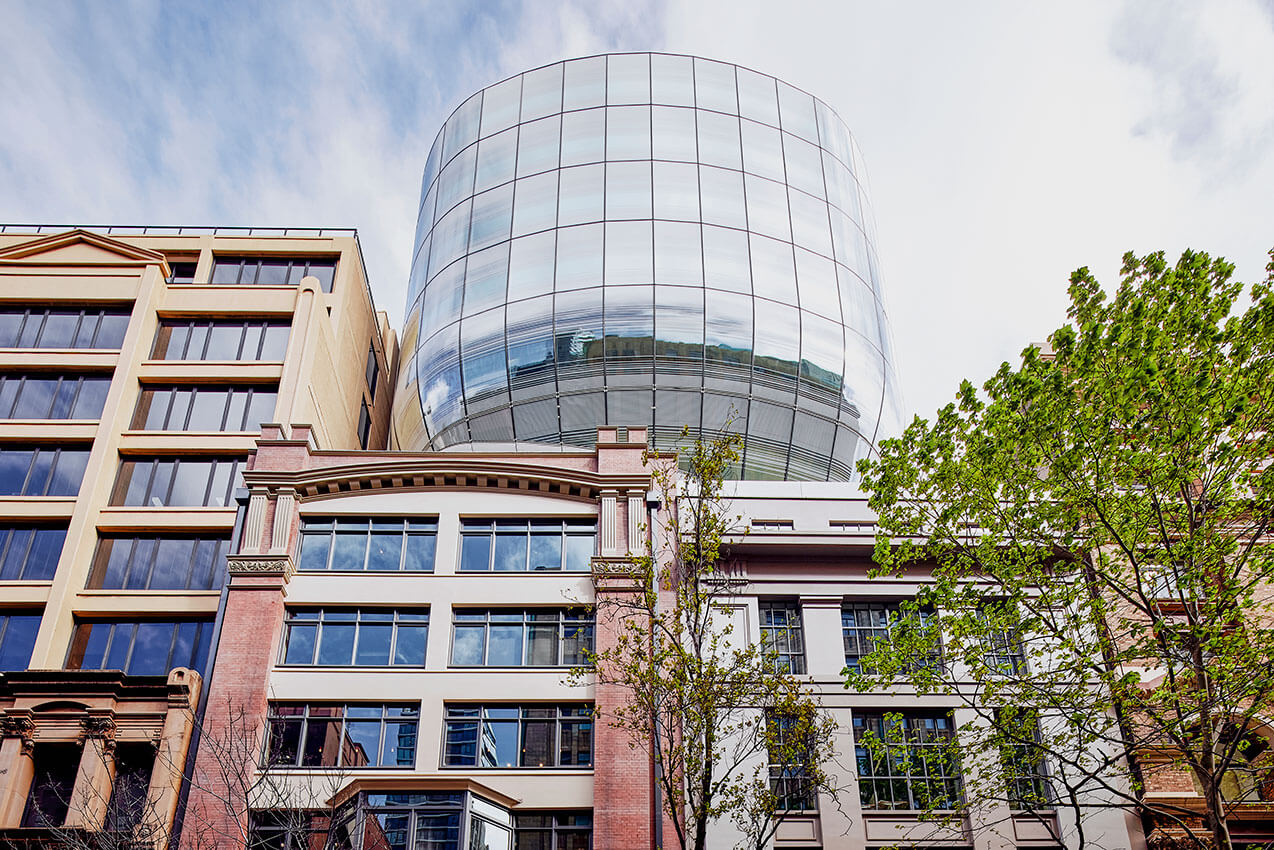
2023 National Architecture Awards Program
Sub Station No. 164 | fjcstudio (formerly fjmtstudio)
Traditional Land Owners
Gadigal people of the Eora Nation
Year
Chapter
New South Wales
Category
Heritage
Lord Mayors Prize (NSW)
Sustainable Architecture
Builder
Photographer
Raw Life Studios
Toby Peet
Media summary
The restricted site for the project was two disused and degraded industrial buildings, the Shelly Warehouse and the former Electrical Substation 164. The Machine Hall of the substation, although neglected offered the opportunity of a grand industrial volume connecting Clarence and Sussex Street.
A new curvilinear transparent form of layered glass and linear varied white ceramic frit has been carefully profiled in plan and section to give the impression of lightness and suspension above the heavy and articulate masonry facades of the heritage buildings. This form tampers back above the Substation through a significant cantilevered structure to maintain the open volume of the Machine Hall and emphasis the lightness of the new elements.
The project has a wholistic approach to sustainability, adapting existing buildings to create healthy and authentic places to work and be. This is a project about the future, that preserves the past through complement and contrast.
2023
New South Wales Architecture Awards Accolades
Shortlist – Commercial Architecture
Shortlist – Heritage
The Substation 164 project was a wonderful partnership between Built and fjmt that has had a profound impact on our organisation. Our leadership group and all the staff have been delighted at the outcome. Working within the new and refurbished spaces of this unique combination of heritage and new architecture it not only healthy, comfortable and enabling but inspiring and motivating. It has been particularly impactful for our team to experience the benefits of great design, the clarity of the concept, the attention to detail, the treatment of new and old with equal care, are all truly appreciated and understood.
Client perspective
